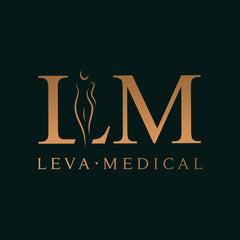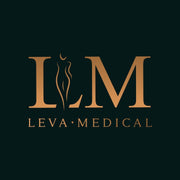Exosome Therapy: Regenerative Medicine and Beyond
Exosome therapy represents a breakthrough in regenerative medicine, utilizing nanoscale vesicles to aid in cell communication and tissue repair. This article offers a clear overview of what exosome therapy is, how it works, and why it’s gaining attention in medical science.
Key Takeaways
-
Exosome therapy utilizes nanoscale extracellular vesicles to facilitate intercellular communication, enabling targeted delivery of bioactive molecules and reducing the risks associated with traditional cell therapies.
-
The mechanism of exosome therapy involves the biogenesis, cargo loading, and specific uptake by recipient cells, enhancing the therapeutic effects in various medical applications including regenerative medicine and skin rejuvenation.
-
Despite its promise, challenges such as scalability, quality control, and safety concerns must be addressed to fully realize the potential of exosome therapy in clinical practice.
Understanding Exosome Therapy

Exosome therapy is a cutting-edge approach in regenerative medicine, harnessing the power of tiny, nanoscale extracellular vesicles to facilitate intercellular communication. These exosomes act as messengers, transferring bioactive molecules such as mRNA, proteins, and lipids from one cell to another, thereby regulating physiological and pathological processes within the body. Found in nearly all body fluids, exosomes allow for non-invasive sampling, making them invaluable in both diagnostic and therapeutic contexts.
The unique characteristics of exosomes, including their biocompatibility and ability to efficiently deliver molecular cargo to target cells, make them particularly suited for therapeutic applications. For instance, exosomes derived from mesenchymal stem cells (MSCs) are known for their regenerative, immunomodulatory, and anti-inflammatory properties, which are crucial for tissue regeneration. These properties position exosomes as a promising alternative to traditional cell-based therapies, offering a cell-free therapy option that reduces the risk of immune rejection and other complications.
Various cell types, including macrophages, dendritic cells, platelets, and tumor cells, produce exosomes, each with a unique composition that influences their biological effects. This diversity in exosome origins and functions underlines their versatility in medical applications. For example, exosomes derived from MSCs not only aid in tissue repair but also modulate immune responses and promote anti-inflammatory effects. This broad range of functionalities opens up numerous possibilities for exosome therapy in treating various conditions.
Moreover, the lipid bilayer of exosomes enhances the bioavailability of their cargo, ensuring that the therapeutic molecules they carry are delivered efficiently to the target cells. This natural delivery system is more effective and less invasive than traditional methods, making exosome therapy a promising avenue for developing new treatments.
Understanding the fundamental role of exosomes in cell-to-cell communication and their potential in regenerative therapies sets the stage for exploring their mechanisms of action and therapeutic applications. As we delve deeper into the world of exosomes, we begin to see how these tiny vesicles can make a monumental impact on healthcare.
The Mechanism of Action of Exosomes
The mechanism of action of exosomes is intricate and fascinating, involving several stages from their formation to their interaction with recipient cells. These nanoscale extracellular vesicles are pivotal in cell-to-cell communication, effectively mediating the transfer of bioactive molecules across cells.
This section will delve into the biogenesis of exosomes, the loading of their cargo, and their release and uptake by recipient cells.
Biogenesis
Exosomes are formed through a complex process involving multivesicular bodies (MVBs) in the endocytosis pathway. The biogenesis of exosomes begins with the formation of early endosomes, which mature into MVBs. During this process, the internal budding of the endosomal membrane results in the creation of intraluminal vesicles that eventually become exosomes. These vesicles are then either degraded by lysosomes or released into the extracellular space through fusion with the plasma membrane.
The formation of intraluminal vesicles within MVBs can occur through the ESCRT pathway or ESCRT-independent mechanisms. Proteins such as Rab GTPases, SNAREs, and ESCRT complexes play crucial roles in facilitating the release of exosomes from MVBs. Once the MVBs fuse with the plasma membrane, the exosomes are released into the extracellular space, ready to perform their functions.
This process of exosome biogenesis and release is essential for their role in regenerative medicine and other therapeutic applications. Understanding exosome formation and release helps researchers manipulate these processes to enhance their therapeutic potential in tissue regeneration and other medical fields.
Cargo Loading
The cargo loading of exosomes is a critical step that determines their function in cell communication. Exosomes are loaded with a variety of bioactive molecules, including proteins, lipids, and nucleic acids, which are essential for their biological effects. The composition of these molecules varies depending on the parent cell type, influencing the specific therapeutic applications of the exosomes.
There are two primary methods for loading specific components into exosomes: pre-loading and post-loading. Pre-loading involves the incorporation of target molecules during the biogenesis of exosomes, while post-loading involves modifying exosomes after their formation. Each method has its challenges and advantages. For example, pre-loading can be difficult to control, whereas post-loading can be enhanced using physical and chemical induction techniques.
Surface modification of exosomes is another strategy to improve their therapeutic impact. By altering the surface proteins of exosomes, researchers can selectively deliver them to target cells, enhancing their efficacy in drug delivery and other therapeutic applications. These advanced techniques in cargo loading and surface modification are paving the way for more effective and targeted exosome therapies.
Release and Uptake by Recipient Cells
Once exosomes are released into the extracellular space, they interact with recipient cells through various uptake mechanisms. These include direct fusion with the cell membrane and endocytosis, allowing exosomes to deliver their cargo directly into the target cells. The uptake of exosomes by recipient cells facilitates their ability to modulate cellular functions, enhancing or altering the recipient cells’ physiological responses.
The specific mechanism of exosome uptake can be influenced by the surface proteins on the exosomes and the characteristics of the recipient cells. Exosomal surface proteins play a crucial role in recognizing and binding to specific recipient cells, ensuring that the exosomes are delivered to the intended targets. This selective delivery is essential for the therapeutic effectiveness of exosome therapy.
Optimizing the release and uptake mechanisms of exosomes is vital for their effective use in drug delivery and other therapeutic applications. Manipulating these processes can make exosome-based treatments more reliable and effective for various medical conditions.
Therapeutic Applications of Exosome Therapy

Exosome therapy is being explored for a wide variety of clinical indications, showcasing its versatility and potential.
Some of the promising therapeutic applications of exosome therapy include:
-
Cancer treatment
-
Tissue repair
-
Cardiovascular disease
-
Neurological disorders
-
Inflammatory diseases
-
Infectious diseases
The ability of exosomes to deliver therapeutic agents directly to target cells makes them an attractive option for many conditions.
Common sources of exosomes used in therapy include mesenchymal stem cells (MSCs) and dendritic cells (DCs). MSC-derived exosomes, in particular, are valued for their regenerative, immunomodulatory, and anti-inflammatory properties. These properties make them suitable for treating conditions where tissue repair and modulation of the immune response are critical.
Exosome therapy is considered a cell-free therapy, which reduces the risks associated with traditional cell-based therapies, such as immune rejection and limited cell viability. This advantage, combined with the targeted delivery of therapeutic molecules, enhances the efficacy of treatments and expands the possibilities for exosome therapy in clinical practice.
Regenerative Medicine
In the realm of regenerative medicine, exosomes play a pivotal role in tissue repair and regeneration. Exosomes derived from human mesenchymal stem cells (MSCs) have unique properties that contribute to these regenerative processes, making them a focus of intense research and application. These mesenchymal stem cell MSC-derived exosomes can induce therapeutic effects comparable to those of the parent stem cells, without the associated risks. Additionally, mesenchymal stem cell therapy is gaining attention for its potential to enhance these effects.
One of the highlighted therapeutic areas for exosome therapy is the treatment of osteoarthritis. Exosomes target chondrocytes, aiding in the repair and regeneration of cartilage tissue. This application is particularly promising for joint diseases, where traditional treatments have limited effectiveness. Exosomes enhance the overall regenerative process by promoting angiogenesis, modulating immune responses, and stimulating cell proliferation and differentiation.
The use of exosomes in regenerative medicine minimizes issues associated with direct stem cell therapies, such as immune rejection and limited cell viability. This cell-free approach, combined with the ability of exosomes to facilitate cellular communication and transport bioactive molecules, positions them as a powerful tool for advancing regenerative therapies.
Advantages and Challenges of Exosome Therapy

Exosome therapy offers several advantages that make it an attractive option for various medical applications. One of the primary benefits is the low risk of immunogenicity, making exosome therapy suitable for a wide range of patients. Additionally, the targeted delivery of therapeutic molecules by exosomes enhances the efficacy of treatments, ensuring that the therapeutic agents reach their intended targets.
The ability of exosomes to carry a diverse range of biomolecules further increases their therapeutic possibilities. This versatility allows for the development of personalized treatments tailored to the specific needs of patients. However, the production of exosomes on a large scale remains a significant challenge, limiting their widespread application.
Quality control during the production of exosomes is crucial to ensure their effectiveness and safety. Variability in exosome preparations can lead to inconsistent therapeutic outcomes, highlighting the need for standardized production methods. Moreover, the regulatory approval processes for exosome therapies can be lengthy and complicated, posing another hurdle for their development and commercialization.
Safety concerns related to the long-term effects of exosome therapy need to be carefully evaluated. Monitoring the long-term safety of these therapies is essential to uphold ethical standards in medical practice. Despite these challenges, the potential benefits of exosome therapy in enhancing the efficacy of treatments and reducing the risks associated with traditional therapies make it a promising area of research and application.
Addressing these challenges is critical for the future of exosome therapy. Overcoming the challenges of scalability, quality control, and regulatory approval can unlock the full potential of exosome therapy, paving the way for innovative treatments that improve patient outcomes.
Exosome Therapy for Skin Rejuvenation

Exosome therapy is gaining popularity in the field of dermatology, particularly for skin rejuvenation. Patients typically need fewer sessions of exosome therapy to achieve optimal results, with most requiring only 1 to 2 treatments. This efficiency makes exosome therapy an attractive option for those seeking quick and effective skin rejuvenation.
Exosomes contain bioactive molecules that promote cell proliferation, angiogenesis, and collagen synthesis, contributing to improved skin rejuvenation outcomes. Growth factors in PRP and bioactive molecules in exosomes stimulate collagen and elastin production, resulting in smoother, firmer, and more youthful-looking skin. These properties make exosome therapy a powerful tool for enhancing overall skin texture and appearance.
AD-MSC exosomes are particularly effective in promoting skin cell growth and enhancing skin hydration, leading to a more youthful appearance. The antioxidant properties of MSC-derived exosomes also counteract skin aging effects, providing a comprehensive solution for skin rejuvenation. In Japan, exosome therapy is already offered in numerous medical institutions, primarily targeting skin care and anti-aging.
For individuals with sensitive skin, exosome therapy presents a safer alternative to synthetic fillers, reducing the risk of adverse reactions. This natural approach to skin rejuvenation not only improves aesthetic outcomes but also promotes longer-lasting effects. Harnessing the regenerative potential of exosomes allows patients to achieve significant improvements in skin health and appearance with minimal downtime and risk.
Combining Exosome Therapy with Other Treatments

Combining exosome therapy with other treatments can enhance the overall effectiveness and outcomes of medical procedures. Integrating PRP and exosome therapy with facial fat grafting, for instance, represents an advanced approach in cosmetic medicine. This combination aims to enhance the regenerative potential of the treatment, leading to more predictable and lasting results.
The addition of PRP and exosomes can improve the viability and integration of transplanted fat cells, promoting longer-lasting rejuvenation effects. These combined therapies not only enhance aesthetic outcomes but also support the regenerative processes, making them a powerful tool in cosmetic and regenerative medicine.
By leveraging the complementary mechanisms of PRP and exosome therapy, patients can experience improved healing, reduced inflammation, and faster recovery, minimizing downtime and enhancing overall treatment outcomes. This synergistic approach opens new possibilities for innovative and effective medical treatments.
PRP (Platelet-Rich Plasma)
Combining exosome therapy with Platelet-Rich Plasma (PRP) offers enhanced healing and regeneration outcomes in various medical applications. PRP is derived from the patient’s own blood and is rich in growth factors that promote tissue healing and regeneration. When combined with exosome therapy, the healing effects are amplified due to their complementary mechanisms. This combination can lead to improved tissue repair, making it particularly beneficial for conditions requiring accelerated healing.
Exosome therapy can provide a higher concentration of growth factors compared to PRP alone, further enhancing tissue repair and regeneration. This makes the combination particularly effective in medical fields such as orthopedics, dermatology, and sports medicine. For instance, integrating exosomes into PRP therapy can significantly boost hair follicle activation, providing a powerful solution for hair loss treatments.
The regenerative properties of PRP and exosomes also help reduce inflammation and promote faster recovery, thereby minimizing downtime for patients. This synergy between PRP and exosome therapy not only enhances the efficacy of treatments but also improves patient satisfaction by delivering quicker and more effective results.
Stem Cell Therapy
Exosome therapy, when combined with traditional stem cell therapy, can significantly amplify the therapeutic effects of stem cell treatments. Exosomes derived from stem cells have shown potential to enhance the regenerative effects of traditional stem cell therapies, providing a powerful tool for tissue repair and regeneration. This combination leverages the strengths of both therapies, offering improved outcomes for patients.
Using stem cell-derived exosomes can improve tissue regeneration and reduce inflammation, which are critical factors in the success of adult stem cells therapies. The enhanced cellular communication facilitated by exosomes derived from stem cells improves the effectiveness of traditional stem cell treatments, ensuring that the therapeutic agents reach their target cells more efficiently.
This synergistic effect not only improves the efficacy of stem cell therapies but also reduces potential complications associated with direct stem cell injections. By enhancing the regenerative potential of stem cell treatments, exosome therapy represents a significant advancement in the field of regenerative medicine.
Safety and Ethical Considerations
Safety and ethical considerations are paramount in the development and application of exosome therapy. Ethical issues often relate to the source of stem cells used for exosome isolation, particularly concerning embryonic stem cells. Ensuring that exosomes are derived from ethically sourced stem cells is essential to maintain the integrity of the therapy and public trust.
Informed consent is a crucial ethical aspect, requiring patients to fully understand the risks and benefits of exosome therapy. Patients should be provided with comprehensive information about the treatment, including potential risks such as infection or uneven fat absorption, to make informed decisions. Clinics must also adhere to strict safety protocols and utilize FDA-compliant exosomes to ensure patient safety.
Monitoring the long-term safety of exosome therapy is necessary to uphold ethical standards in medical practice. Establishing regulatory guidelines for exosome therapy is essential to ensure patient safety and ethical practice. This includes rigorous testing and quality control measures to prevent adverse events and complications. Patients should seek clinics with qualified medical professionals and positive patient reviews to ensure a safe treatment experience.
Recent reports indicate serious health risks associated with unapproved exosome treatments, including adverse events and complications. The FDA has emphasized the importance of rigorous testing and adherence to safety standards to prevent such risks. Choosing reputable clinics and adhering to safety protocols can mitigate these risks and allow patients to benefit from the therapeutic potential of exosome therapy.
Addressing these safety and ethical considerations is crucial for the responsible development and application of exosome therapy. By ensuring ethical sourcing, informed consent, and adherence to safety standards, the medical community can advance exosome therapy as a safe and effective treatment option.
Summary
Exosome therapy stands at the forefront of regenerative medicine, offering a revolutionary approach to healing and treatment. These nanoscale extracellular vesicles facilitate intercellular communication, delivering therapeutic agents directly to target cells. With applications ranging from cancer treatment to skin rejuvenation, exosome therapy presents a versatile and powerful tool in modern medicine.
The advantages of exosome therapy, such as low immunogenicity, targeted delivery, and diverse biomolecule cargo, make it an attractive option for various medical conditions. However, challenges such as scalability, quality control, and regulatory approval must be addressed to unlock its full potential. By overcoming these hurdles, exosome therapy can revolutionize healthcare, providing innovative solutions for tissue regeneration and beyond.
Frequently Asked Questions
What are exosomes, and how do they work in therapy?
Exosomes are nanoscale extracellular vesicles essential for intercellular communication, transferring bioactive molecules like mRNA and proteins. They play a therapeutic role by delivering these agents directly to target cells, which enhances tissue regeneration and modulates immune responses.
What are the benefits of combining exosome therapy with PRP?
The combination of exosome therapy with PRP significantly enhances healing by providing a higher concentration of growth factors, improving tissue repair, reducing inflammation, and accelerating recovery. This synergistic approach offers a comprehensive strategy for better patient outcomes.
Are there any safety concerns with exosome therapy?
Exosome therapy does raise safety concerns, including the source of stem cells and potential infection risks, highlighting the importance of long-term safety monitoring. It is crucial to select clinics with qualified professionals and established safety protocols to minimize these risks.
How does exosome therapy enhance skin rejuvenation?
Exosome therapy enhances skin rejuvenation by promoting cell proliferation, angiogenesis, and collagen synthesis, leading to smoother, firmer, and more youthful-looking skin. The bioactive molecules in exosomes effectively stimulate the production of collagen and elastin.
What are the challenges in the widespread application of exosome therapy?
The widespread application of exosome therapy faces significant challenges, including scalability of production, quality control, regulatory approval, and ensuring long-term safety. Addressing these issues is essential for the responsible advancement of this therapeutic approach.




